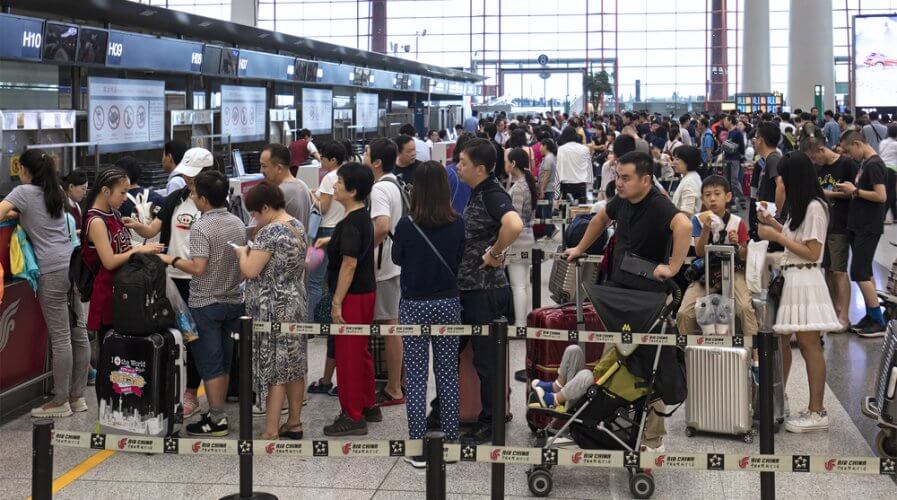
Beijing is using facial recognition it its new airport to ease congestion. Source: Shutterstock
China’s new airport won’t have humans manning immigrations
CHINA loves surveillance technology. The country is using it everywhere, from monitoring traffic to protecting homes; it’s slowly getting integrated into the fabric of Chinese society.
According to South China Morning Post (SCMP), the country is looking to implement the technology in its new Beijing airport to reduce bottlenecks in security and immigration screening.
This is part of China’s efforts to cope with the expected surge in air travelers in the coming years.
Currently, the Beijing Capital International Airport (BCIA) welcomes 95.8 million passengers a year, with estimates to reach 170 million travelers by 2025 as reported by The National.
The identity verification at the new airport will make use of computer vision to match a passenger’s appearance to the national ID database. This will allow for a smoother immigration process while reducing the need for manpower to perform the repetitive tasks.
Authorities can also use the system to match users to belongings, allowing them to assess any unattended baggage for security risks.
Homegrown artificial intelligence companies Yitu and SenseTime are expected to bid for the project.
Yitu’s facial recognition technology is currently being deployed at BCIA, while SenseTime’s systems are used in Chengdu and Haikou airports, as well as 30 train stations across China.
China isn’t the only one using surveillance and facial recognition to track citizens in airports. Similar technologies are being implemented in airports across the world, some used to identify foreign travelers as well.
In Japan’s Narita airport, eGates are used to automate immigration for returning nationals while staff is redeployed to help with handling the growing number of overseas visitors.
Similarly, in the US, exit biometrics are used to verify the identity of travelers leaving the country, both nationals, and visitors.
In some US airports, British Airways has implemented biometric identification gates to decrease boarding wait times. The biometric gates remove the need to show a boarding pass and identification when getting on a plane.
Singapore’s Changi airport is also beginning to roll out facial recognition systems in one of its terminals to offer self-service options at check-in, bag drop, immigration, and boarding. Interestingly, it is also looking to use facial recognition to locate lost travelers.
Besides facial recognition technology, Beijing’s new airport is touted to feature other emerging technologies such as internet of things (IoT), cloud computing and storage, individual smart devices and virtual reality.
A spokesperson from the airport told the SCMP, “Our priority is passenger experience, merging technologies into the overall environment to ensure a seamless boarding experience.”
As technology advances, surveillance systems will play an increasingly important role in air travel. The use of facial recognition systems has sparked debates in the US, especially from civil rights groups.
However, the trend suggests that facial recognition will play a role in air travel, not only for security reasons but to automate processes to ensure a smoother airport experience.
READ MORE
- Ethical AI: The renewed importance of safeguarding data and customer privacy in Generative AI applications
- How Japan balances AI-driven opportunities with cybersecurity needs
- Deploying SASE: Benchmarking your approach
- Insurance everywhere all at once: the digital transformation of the APAC insurance industry
- Google parent Alphabet eyes HubSpot: A potential acquisition shaping the future of CRM




